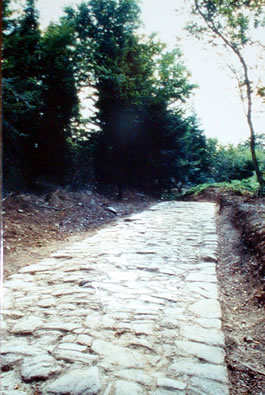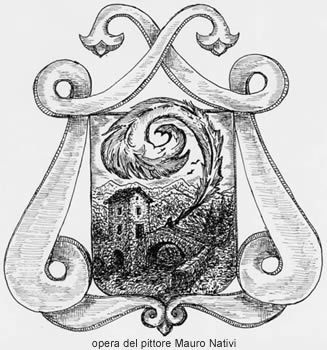"Gli Appennini sono per me un pezzo meraviglioso del creato. Alla grande pianura della regione padana segue una catena di monti che si eleva
dal basso per chiudere verso sud il continente tra due mari (....) è un così bizzarro groviglio di pareti montuose a ridosso l'una dall'altra;
spesso non si può nemmeno distinguere in che direzione scorre l'acqua."
J. W. Goethe, Viaggio in Italia (1786 - 1788)
J. W. Goethe, Viaggio in Italia (1786 - 1788)
A FIRM AND PROFITABLE RESEARCH
Titus Livius in the XXXIX book of his work “The history of Rome” tells that in 187 B.C. the consul C. Flaminis, after defeating the Liguri settled on the Appenines between Tuscuny and Emilia, made his legions build a road from Bologna to Arezzo.
This road, fallen into disuse already in the imperial age, was lost for human carelessness and knavery, for the distructions caused by natural events and, where it was conserved, for the millenary sedimentation that had covered it.
Until the last decades of the XX century no traces of it were found.
Then, Cesare Agostini and Franco Santi, from Castel dell’Alpi, giving credit to the tells of their ancestors and convinced from the favorable orography, in 1977 started the researches of this road on the watershed ridge between the streams Setta and Savena, in the woody and still wild area of the Appenninic crossing, north of the Futa Pass.
In 1979 they found the first stretch of paved road and for twenty years they have dug by themselves, or with the help of friends, bringing to light many stretches of roman pavements that were covered by 50-80 cm of ground, locating a total length of about 11 Km.
Titus Livius in the XXXIX book of his work “The history of Rome” tells that in 187 B.C. the consul C. Flaminis, after defeating the Liguri settled on the Appenines between Tuscuny and Emilia, made his legions build a road from Bologna to Arezzo.
This road, fallen into disuse already in the imperial age, was lost for human carelessness and knavery, for the distructions caused by natural events and, where it was conserved, for the millenary sedimentation that had covered it.
Until the last decades of the XX century no traces of it were found.
Then, Cesare Agostini and Franco Santi, from Castel dell’Alpi, giving credit to the tells of their ancestors and convinced from the favorable orography, in 1977 started the researches of this road on the watershed ridge between the streams Setta and Savena, in the woody and still wild area of the Appenninic crossing, north of the Futa Pass.
In 1979 they found the first stretch of paved road and for twenty years they have dug by themselves, or with the help of friends, bringing to light many stretches of roman pavements that were covered by 50-80 cm of ground, locating a total length of about 11 Km.
Authors:
Avv. Cesare Agostini and Franco Santi.
Taken from the informative depliant about the book:”The
road Bologna-Fiesole of the II Century B.C.”.Casa Editrice
CLUEB

Foto gentilmente concessa dall' Avv. Cesare Agostini




